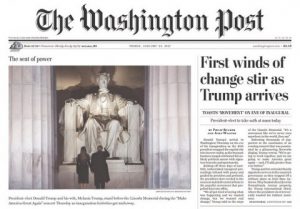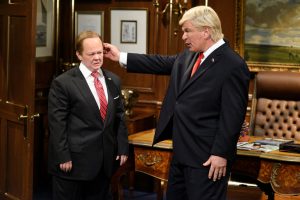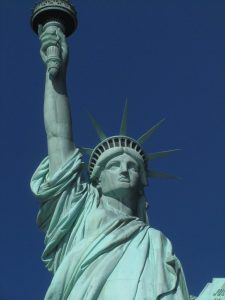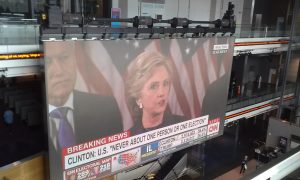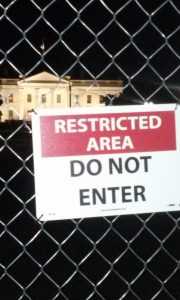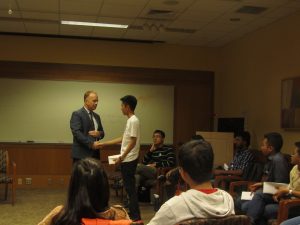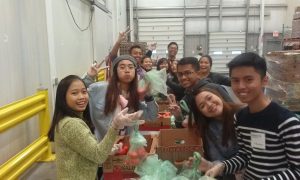Jack Barry – Syllabus spring 2019 – Human Rights through film – final draft (updated)
Author: Barry, Jack
Simulating in the classroom (Part II)
This is a followup post to “Simulating in the classroom (Part I)” which can be accessed here.
A second simulation, called Ba Fa’ Ba Fa’ I have found to be particularly effective. This one was also created by Gary Shirts and has been used by the Peace Corps for decades to teach new corps members the dangers of seeing the world through one’s own cultural lens. To set up the simulation, a brief introduction of two cultural groups is provided. The groups, named Alphas and Betas, separately learn the rules of their new culture in different rooms—two facilitators and two rooms near each other are required for this simulation to work. The Alpha culture is a touchy-feely relationship-oriented culture, with high context, and strong ingroup outgroup mentality. The Beta culture is a highly comp
etitive trading culture which speaks a “foreign language.” Once participants learn the rules of their culture observers and visitors are exchanged. In the words of the creators: “The resulting stereotyping, misperception and misunderstanding becomes the grist for the debriefing.” In the debrief instructors can start by having students explain their perceptions of the “other” culture, which typically focus on the negative such as describing Betans as “cold,” “greedy,” and “weird” or describing Alphans as “lazy,” “mean,” and “unfriendly to outsiders.” What is fascinating is that students describe the “other” culture in contrast to their newly acquired Alpha/Betan culture, which they learned only at the start of the simulation. If this is the case in this simulation imagine what years of living in your own culture does to one’s lens? It is a great starting point for a varied discussion on the impact of culture on beliefs, stereotypes, and communication.
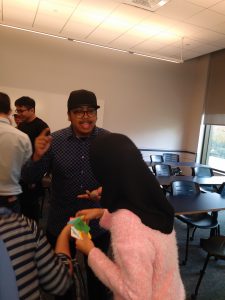
Briefly described here, a third simulation, created by Dr. Peter Diplock, Assistant Vice Provost at the Center for Excellence in Teaching and Learning at the University of Connecticut, puts students into groups representing two railroad companies, who the instructor notes at the start are “non-competitor companies,” tasked with negotiating about use of a shared rail line. The negotiations take place across multiple rounds (one for each pair of students) and allows students to practice negotiation skills individually in front of the class. Yet what typically happens is that the groups get competitive, despite knowing that one of the companies is larger and will make more profit. Instead elements of human nature focused on competition rather than cooperation emerge, leaving a lot of profit on the table and setting up strong discussion on why the competitive side won out in the simulation—which always occurs. *More details on this simulation is available upon request as it does not have an official website.
Overall, students get emotional, spirited, and keep conversations going about these simulations throughout the semester. I have found such simulations are powerful for exposing students to ideas of implicit bias, power, and to the strong cultural lenses that reside in all of us as socialized human beings. When they see these ideas taking shape through their own actions in the simulations it makes the concepts come to life in ways simply reading about them often does not. Of course, simulations also help break up long lectures—why simply tell someone about a concept when you can make them enact it through their own actions? Experience–based learning endures as I’ve had students remember these powerful lessons many years later—certainly more so than my Power Point lectures.
Simulating in the Classroom (Part I)
Educational studies show that the human mind needs a change of pace after 10-20 minutes of lecture when academic attention/performance starts to wane (see Burke and Ray 2008). This makes for a challenge in the college classroom where teachers are often required to fill 50-minute, 75-minute, or 150-minute time slots. Traditional approaches to breaking up a lecture typically include group work, films, and varied discussion formats. Our Teaching Human Rights blog is filled with innovative alternatives such as experiential learning, online hybrid learning, and service learning. In this post, I introduce in-class simulations as another approach I have found successful which applies directly to human rights courses and to many other courses tackling power, cultural difference, or human nature/relationships.
Specifically, three types of simulations have proven effective each time I have facilitated them and can easily be integrated into one’s teaching style. In fact, all have a debrief component that can be melded into multiple parts of one’s course. They all take about 2 hours to run, but can easily be split up into two 50-minute classes.
The simulation I find to be the most interesting and effective was developed by Gary Shirts and is unfortunately called StarPower, a name which gives away what it is really about: an exercise of power. On my syllabi, I rename the simulation “Circles, Tringles, and Squares” and tell the students it is a game “to get to know each other” rather than saying anything about how it will expose the way they handle power. As a way of setting up the simulation, the instructor announces that the 3 people with the highest scores at the end will win the game. Students are broken up into three separate groups (I prefer about 8 students or less per group, but this could be adjusted for a larger class) and during the first two trading rounds it becomes clear that there are three separate groups in terms of scores—the instructor can move some students around to make sure this happens. In fact, the instructor should move one student from the lowest scoring group to the highest across the two rounds. This effectively tells the false story, illustrated during the debrief, that “anyone can make it” although the structure of the system makes that highly unlikely. The students do not know that their scores were essentially baked into the cake when they received their chips, which are worth different amounts. In fact, it is similar to “birth lottery” wealth outcomes seen in the “real world.” Where the simulation gets really intriguing is when it is announced that “the squares group clearly has proven to be superior negotiators, thus to shake things up for the final round of trading they will make up the new rules of the game.”
I then take the “squares” group out of the room and instruct them that they can make up new rules for trading. Students often ask what the point of the game is and I tell them again that the “3 people with the highest scores win.” The “squares” typically make the new rules of the game, which can include secret rules only to be announced to the whole class at the end of the game, to not hurt their scores, and usually are extremely beneficial to them. Utopian ideas get crushed quickly if they emerge at all. Meanwhile, the other two groups experience what it is like to not have any power as they are told they can only write down suggestions for the “squares” group that, as facilitator, I provide for them to “consider” from time to time. The lower-class groups get bored and frustrated quickly, looking forward to the simulation being over. When the “squares” have decided on their new rules they come back into the room, yet I hold them at the door to build tension for the “squares” re-entering the room for the final round of trading. Often when they enter they act awkward, typically prideful or sheepish, and frequently receive some taunts from the other groups such as “here come the richy rich.” After this last round is completed, the instructor tells the class: “We actually are not going to tally the final scores. Instead let’s discuss what was this game really about?” The debrief discussion can be quite engaging with students thinking about why they acted the way they did while wielding power and what it felt like being powerless.
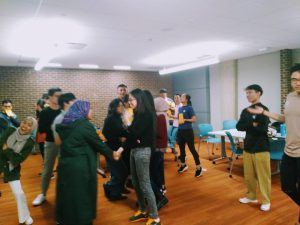
This simulation teaches many things. The creators of it note: “Each of us may be more vulnerable to the temptation to abuse power than we realize. Power can be amazingly seductive.” To relieve tension/animosity that can develop between those in different groups I tell them that no matter who was in the “squares” group that their behavior would very likely be the same—in fact this is a “strong situation” where human nature is very predictable (see Project Implicit 2018)—sort of like following the rules of going through security at the airport. Furthermore, the creators note the following lessons: “To change behavior, it may be necessary to change the system in which that behavior occurs. Few people are likely to participate in an endeavor if they feel powerless. What seems fair to those in power is not likely to seem fair to those who are out of power. Persons who are promoted rarely remember those they leave behind. In any system, there needs to be checks on power. If there are no checks, power will almost certainly be abused.” I have found these points to be true in the multiple times I have run this simulation.
The website of StarPower suggests the activities are useful with “Groups concerned about the ethical use of power. This generally includes peace groups, classes on racism, diversity, ethics, and almost any other course or activity concerned with making the world a better place to live. Teachers of business, sociology, psychology, political science, economics, or history, who believe that it is important for their students to experience and understand power as a concept.” Of course, there are multiple lessons that can be derived from this that could be incorporated into a variety of human rights-focused courses, especially around the tendency of power to corrupt, or why the human rights for those without power always seem to be under threat, and the general tendency felt by those with power to hold onto their power/wealth. Lastly, if cost is an issue you can create your own version of the simulation—all it takes is different colored chips, envelopes, pins, and an understanding of the basic rules.
Look for Part II of this post with other simulations.
Author. Jack J. Barry, Ph.D. Political Science
References:
Burke, L.A., Ray, R. (2008). Re-setting the concentration levels of students in higher education: an exploratory study. Teaching in Higher Ed. 13(5), 571–582.
Project Implicit Website (2018) Project Implicit Website, Visited December 8th, 2018. https://implicit.harvard.edu/implicit/aboutus.html
Human Rights and Social Work (Kathy Libal–UConn)
Trials and Tribulations of Sending Students to Public Lectures and Events
Teaching on an active campus with lots of public lectures and events allows for opportunity to enhance our courses. Yet opportunities can come with some unintended costs. When we see the schedule come out for upcoming events of the new semester it is tempting to pack our classes with them. Typical approaches send students to these lectures as extra credit assignments and some “require” that students attend on their own time. Often students have to write some sort of reflection piece to show they attended the talk. Sometimes the course schedule may align, or partially overlap, with the time of the lecture, yet at most institutes of higher learning schedule alignment seems to occur once in a blue moon.
As teachers we know the magic of students exploring new topics that ignite a new passion. We know that speakers can be inspiring and can lead students to pursue new avenues of research or to investigate a brand new subject matter that we did not have the expertise to address in class—especially true in the interdisciplinary world of human rights. We ourselves have been inspired, why not them? However, in human rights, and many other fields for that matter, sending students to public lectures unprepared can lead to headaches for all involved.
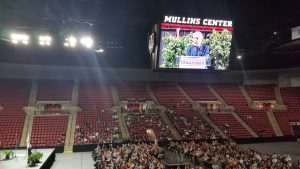
In my time teaching at public universities and private colleges I have tried a few different approaches to utilizing public lectures/events happening around campus. Some have been more successful than others. At first I would follow the approach I was most familiar with: sending students to public lectures for extra credit and having them write up a “reflection.” This worked okay but I found only a certain subset of the students would pursue it: (A) Students who wanted to boost their grade (and usually not the ones who REALLY needed that boost) and (B) students interested in the topic with the time to attend who would likely be going to the lecture regardless. Furthermore, this approach ranked out some students from attending, namely those with less schedule flexibility that often work and/or have caregiving responsibilities. Overall, to me it felt that this approach proved a little hit or miss for influencing how many students would actually attend and our resulting discussion about the lecture in class was often disjointed for the full class. In attempts to remedy this I have brought full classes to public events, as well as brought in guest speakers to my class when they were on campus for an event. These latter two approaches I felt were more effective yet also come with pitfalls of which to be wary.
Here are some tips that I’ve gleaned from my experience with public lectures/events and listening to student responses after attending them:
(1) Prepare students as much as is feasible for the upcoming content. Students like to have warning about what the talk is going to be about and if possible go over some of the jargon the speaker is likely to use beforehand. Of course, that is difficult to predict, but a good faith effort goes a long way and sometimes really pays off as students tend to pickup on more than they would have otherwise, especially key if the speaker will be visiting your class.
(2) Be careful about sending them to a lecture pitched at too high a level (especially for international students who may have difficulty with the English language). I have certainly made the mistake of sending my class composed of many international students to some events that were clearly pitched at a niche audience, a deadening event for all involved.
(3) Consider interactive events rather than only formal lectures. With research now displaying that college age student attention spans for dense topics withering after 10-15 minutes of lecture (Burke & Ray 2008)[1] sometimes other events beyond the typical 50-minute lecture may add real value. For instance, I oriented and scheduled my class this semester around a human rights film series, which included some initial remarks, a film screening, and an ending discussion with Q & A, which kept the flow of the event moving. There are many opportunities around campus for more non-traditional and interactive events. Be on the lookout for events such as job fairs, student organization events, concerts, poetry readings, political protests, and field trips if possible. All of which would get them outside the classroom, interacting with people, and then reporting back about their experience. My guess is years later they will remember effective interactive, outside of class events involving experiential learning, more than many topics taught in our classroom (sorry “sage on a stage” model). Feel free to check out previous posts on this blog that discussed the power of experiential learning approaches including trips down the US Eastern Seaboard during election week and exploring advocacy in D.C.
(4) Don’t overburden them. We are well aware that students’ time is under threat from all sides. If many of your students work or have other outside responsibilities, such as caretaking, be aware of that when scheduling. I have made the mistake of over scheduling outside events and I could tell the students felt overwhelmed. If you cannot schedule events into your class time and have to go the extra credit route be sure to have multiple events at different times and/or days of the week. A few targeted events, at different times, that are talked up beforehand in class may be better than simply listing many with assumed equal importance.
(5) Lastly, and perhaps most importantly, be sure to describe academic rules of etiquette. Ever been to a lecture where half the student audience leaves when the speaker is about to field questions? Of course reminders about appropriate tech usage and what is expected in terms of format helps and will make your students feel more comfortable. You never know if this is the first event of this type they have attended in college.
Don’t forget to have fun with lectures/events and do not lose sight of the magic that can happen through them. One may never know what will ignite students’ passion, but as teachers we can do our best to give them as much grounded electricity as we can. In other words, minimize short circuits!
Feel free to comment here on your experience incorporating lectures and events into your courses—I am sure there are many creative approaches out there! We would love to hear about your experience.
References: [1] Burke, L.A., Ray, R. (2008). Re-setting the concentration levels of students in higher education: an exploratory study. Teaching in Higher Ed. 13(5), 571–582.
Author: Jack J. Barry, Ph.D. University of Connecticut.
Human Rights Through Film Syllabus (UConn spring 2017)
Human Rights Through Film Syllabus (UConn spring 2017) Jack J. Barry, Ph.D.
Teaching Human Rights in the Trump Era: 100 Days and Beyond
Closing out our series in this blog on teaching human rights in Trump’s first 100 days in office, this post offers a synopsis of themes exposed in this series.
The 100-day mark has come and gone for the Trump Administration, and along with it teachers’ experience of a first semester or quarter teaching during this politically charged time. For those following our blog, over the past four months we have been discussing the various challenges of teaching human rights courses during the opening salvo of the Trump Presidency. Posts ranged from how do you incorporate changing current events into your already established course, to how do we teach about rights and institutions that seem far less permanent than before, to even how do we teach about the things that didn’t happen? Our series also highlighted teaching political advocacy and bringing students on field trips to the belly of the beast, Washington DC, to designing a new course knowing rights would be under threat in the USA, to using humor as potential teaching reprieve in what has become a ripe time for ironic critiques of those in power.
A few common themes stand out from our series about teaching human rights in the early days of the Trump Administration: (1) Enhanced concern for groups under threat in our local areas—with a particular focus on practical policy change/resistance to Trump’s policy; (2) Importance of staying abreast of ever changing current events; (3) The dangers of becoming too insular, focusing too much on the USA and less on rights in the international community; and (4) The challenge of responding to direct absurdities from the Trump Administration.
(1) From election night onward direct concern for threats to rights for different groups in the USA has been at the forefront of coverage oriented around human rights. This concern was palpable for our students from when they first entered our classrooms in the early days after the inauguration, the Women’s March, and when the Trump Travel Ban was announced. They were clearly worried for groups they knew, cared about, or were even part of, that were already under increased threat either directly from Administration policies, such as those affected directly by the Travel Ban, or illegal immigrants facing deportation. Also, the importance of what can be done practically at the local level to protect the rights from groups under threat was an overarching theme —as seen in Tina Chiarelli-Helminiak’s post about the trip to Washington DC to learn how advocacy works on Capitol Hill.
(2) The importance of staying abreast of quickly changing current events was another theme we saw in teaching during this tumultuous time. Current events always interest students, but sometimes focusing on them too much can cause us all to miss the forest for the trees. However, putting events in historical context proved to be a strong strategy as students could be given comparative and contextual lenses to view the assault on rights the Trump Administration has attempted to carryout. Finding the sweet spot between the two can be difficult, but we felt it was worth the effort as students wanted to know more about what was happening in real time.
Cathy Buerger’s post succinctly describes the interest in current events as a teaching opportunity: “Rather than seeing this as an inherent challenge, however, I chose to view this as a teaching opportunity. Throughout the semester, I assigned students to keep a ‘news journal,’ recording the important events that occurred in relation to immigration and education each week. At the beginning of every class, one student is in charge of providing the class with a news brief, to ensure that we are all on the same page. After that student presents the news from the week, we open it up for questions, clarification, or additional news stories that the students have come across. Most weeks, this process takes about 5 minutes, although some weeks (like the week that the initial Muslim ban was passed), it lasts much longer.”
Source: Image from Washington Post.
(3) It was also clear that there are dangers of becoming too insular, focusing too much on the US and less on the international community. Although the US has long played by its own rules in international affairs, as one of the only countries that did not sign many vital human rights treaties such as CEDAW, Children’s Rights Treaty, and now the Paris Climate Agreement, yet the US claims to have led the world forward in political rights and in fostering those rights in authoritarian regimes (of course on closer examination this happens only when it fits the interests of US).
Daniel Tagliarina mentions such an international approach in his post about teaching a class on civil liberties in the US: “[An] element to teaching about rights and politics within the current political climate is to also bring in a broader international focus. The most direct way that many of us reading this post (or the one of us writing it) can do this is by discussing the connections between our extant rights, Trump’s various actions, and human rights. By bringing human rights, international law, and global political developments into the conversation, we can allow our students to see how Trump’s proposals fit not only within current US law and politics, but also past US law and politics, global developments, and a broader human rights regime.”
(4) Lastly, something that stood out was the continued challenge of responding to direct absurdities from the Trump White House. From Day 2 of the Administration it was clear spin on political matters, and even basic facts, was going to be beyond anything seen in recent US history. For instance, Press Secretary Sean Spicer boldly tried to claim Trump’s inauguration crowds were bigger than Obama’s despite clear photographic evidence to the contrary. Furthermore, everyday partisan driven headlines seemed to contain more subterfuge, omissions, and straight out lies than usual as seen in Nicole Coleman’s piece about how to teach about “things that did not happen” e.g. the Bowling Green Massacre. Another approach to such absurdities is to respond with irony. Jack Barry’s piece explored an attempt at a reprieve from teaching the typical depressing subject matter of human rights with an exploration of irony and its potential as a weapon against the powerful.
Teaching human rights under the Trump Administration has left us with a variety of strong emotions, often not knowing whether it is appropriate to laugh or cry. Yet, one thing has been clear in the USA: respecting, protecting, and fulfilling human rights matter more than ever, to our inquisitive students searching for the truth, to groups that are under threat, and for us teachers of human rights.
Jack J. Barry, Ph.D., Postdoctoral Fellow, Global Training and Development Institute, University of Connecticut, (blog and website editor) email: jack.barry@uconn.edu
Does a Little Bit of Satire Go a Long Way? : A Potential Teaching Reprieve to the Assault on Human Rights.
Continuing our series in this blog on teaching human rights in Trump’s first 100 days in office this post explores the potential of using satire as a teaching and intellectual tool.
There is often a sad running joke made from teachers of human rights to their students: “this class might be interesting, but it will be downright depressing.” The gravity of the subject matter of rights violations along with stories of savagery, and despicable behavior by the powerful, often make for a suffocating and serious classroom environment. It is very easy to get caught in a dark tide of emotions from human rights content which is typically steeped in human suffering. This is compounded by the inability of the powerless to enforce rights laws globally, or the existence of effective legal mechanisms to consistently hold leaders accountable for abuses they perpetrate.
The problem of powerful elites/politicians ignoring rights law is as old as the laws themselves. Our response as teachers, and as students of human rights, to the lack of enforcement, at least for me, can range from frustration, anger, trepidation, sorrow, to even feeling a sense of hopelessness for the whole rights endeavor. Maybe there are alternative responses to teaching about how the powerful seem to always get away with abuses? Perhaps poking fun at those who violate rights can allow for some space to vent, express frustration/dissatisfaction, and promote a creative learning environment for our students? Could satire even prove effective at garnering the public and media’s attention to demand better government response to rights abuses?
Photo from anti-Trump rally in Northampton, MA following the election: Orange is the New Wack. Photo credit: the author of this blog.
In an experiment, I taught a mid-semester class that was slated on the syllabus to be devoted to freedom of expression/press yet instead of simply focusing on rights laws, enforcement or the lack thereof, I conceptualized the lesson through the lens of satire. Before describing my approach I should mention that this class was titled “Human Rights Through Film” (it was and upper level course but I think a lesson like this could work with an intro course as well). The class took place in the middle of the semester when we already knew each other, and as happenstance would have it, was just about two-months into Trump’s reign as President.
The Trump Administration assault on rights has been well documented—including on our blog. As seen in the first 100 days of his administration his record on rights leaves defenders of rights not knowing whether to laugh or cry. Clearly, humorous satire/parody has come hot and heavy aimed at Trump, from the personal parody portrayed by Alec Baldwin on SNL, to information driven takedowns by John Oliver, to the devastating satire aired nightly by Stephen Colbert on the Late Show. Determining any actual impact of comedic approaches is beyond the scope of this blog post (see this article for an exploration of its potential), yet investigating comedic approaches, limited to film, proves an interesting way to expose students to various abuses of rights, and especially freedom of expression, as comedians seem to always be pushing the limits and dodging defamation law.
In my lesson I had students watch at home, what is perhaps the preeminent political satire film of our time, Dr. Stranglove by Stanley Kubrick. I also had them read work by Lisa Colletta (full citation below) and during class we analyzed clips from SNL, Colbert, Egypt’s Bassem Youssef, and discussed Dr. Strangelove. Conceptually, I divided comedic approaches into four general categories: (1) Parody; (2) Satire; (3) Irony (including postmodern irony); and (4) Comedic actions (basically forms of unconventional political participation with humor at their core). Of these the least oriented towards political change/critique is parody—which is a type of satire that strictly involves mimicry. Many parodies involve poking fun at politicians. For example, recently inspired by the viral response to Melissa McCarthy’s hilarious impression of Trump’s Press Secretary, Sean Spicer, Rollingstone put together a strong list of the greatest political parodies on SNL. Parody though, is meant to mock, not necessarily focused on changing much in society.
McCarthy and Baldwin as Spicer and Trump in parody on SNL. Photo credit: Will Heath/NBC.
Satire provides a more serious critique. In our class discussion we defined it as the use of humor, irony, exaggeration, or ridicule to expose and criticize people’s stupidity or vices, particularly in the context of contemporary politics and it comes with a bit more of a biting response than parody. Satire often tries to change society or politics, using laughter as a weapon, not as an end goal, and yet its efficacy depends on the audience recognizing irony. When the audience does not recognize the irony its impact is lost, such as the classic example of the reading public, or at least some of them, not understanding that Jonathan Swift’s essay, A Modest Proposal, which proposed the Irish poor sell their children to the English as food for the rich, was actually meant as an ironic insight into English policies at the time that had devastating effects on poor Irish families.
Irony, in many ways has become the dominant strand of satire in today’s postmodern, even post truth, world. It is exemplified by John Stewart’s approach on the Daily Show, and taken to an even more ironic level by Stephen Colbert. Irony, often misunderstood, is defined by Merriam-Webster’s as “a pretense of ignorance and of willingness to learn from another assumed in order to make the other’s false conceptions conspicuous by adroit questioning —called also Socratic irony…[or] incongruity between the actual result of a sequence of events and the normal or expected result.”
However, Lisa Colletta, in a 2009 essay digs deeper into the concept of irony, exposing a variant “postmodern irony” of which she says it “denies a difference b/t what is real and what is appearance and even embraces incoherence and lack of meaning.” She claims that postmodern irony is characterized by (A) self-referentiality and (B) cynical knowingness. Yet “a postmodern audience is made conscious of constructed nature of meaning and of it own participation in the appearance of things, which results in the self-referential irony that characterizes most of our cultural output today.” Perhaps the most classic example is Colbert roasting of President Bush at the 2006 White House Correspondents dinner, which in the words of Nelson from The Simpsons deserves a hearty: “Ha Ha.”
Stephen Colbert roasting President Bush at the White House Correspondents’ Dinner in 2006. Bush does not look very happy. Photo Credit: REUTERS/Hyungwon Kang – RTR1CXOV.
All is not a laughing matter though as Colletta points out that any efficacy of irony in today’s media landscape may not be very effective because the audience may not “get it” or it might lead people towards less engagement with politics. In fact, postmodern politics says that it does not matter who is in power as “choice is really between fakes.” The ironic, sophisticated voter is encouraged to let the powerful rule or “appear gullible” (Colletta 2009, p. 858). In our class we further discussed these issues, focusing on whether or not millennial voters lack of turnout has something to do with postmodernity and a feeling of a lack of efficacy even when engaging in the political process.
Again cause and effect is difficult to disentangle here, yet in the end Colletta, and also yours truly, believe that satire can be an important intellectual endeavor that can lead to political action. Colletta summarizes, from satire “we may be forced to see things in a new way and to acknowledge alternative possibilities. This, in turn, could make viewers more tolerant of those who approach things differently, and thus inspire them to action they have not yet considered” (p. 872). Perhaps we can even see evidence of people wanting to see things in a “new way” and to be inspired as many viewers of late night TV switched from Jimmy Fallon over to Stephen Colbert since Fallon infamously “humanized” Trump while Colbert kept pushing the political envelope in a time of national political upheaval.
Towards the end of the lesson I pointed out that unconventional political participation, in the form of comedic actions against rights abuses, actually has a long history. There have been many evocative actions taken that have exposed the irony of rights denying. For instance, the website New Tactics in Human Rights collects info on many cases from around the world of comedic actions. Another NGO, Information Activism, points out 10 approaches to “Exposing the Ridiculous” that can help promote change. One of my favorite examples was the Dole Army hoax in Melbourne Australia, where young people tricked the local TV stations to air segments about a made up army of unemployed people living under the city, on the dole (i.e. welfare in the U.S.), who planned on never working. This action easily, and hilariously, exposed the gullibility of the mainstream media to fall for a literally trumped up narrative against providing economic rights. Closing my lesson from today’s milieu surrounding comedy was Michael Moore’s 10 point call to action against Trump’s policies in the Huffington Post (2/24/17) which concludes with asking people to “JOIN THE ARMY OF COMEDY: Trump’s Achilles heel is his massively thin skin. He can’t take mockery. So we all need to MOCK HIM UP! Not just the brilliant people at SNL or Colbert, Seth Meyers or Samantha Bee ― but YOU. Use your sense of humor and share it with people. Get them to do the same.” And Moore is right, there is little doubt this is the thinnest-skinned U.S. president of all time.
Surely, it is hard to quantify if meaningful impacts will or have occurred from naming and shaming rights abusers through comedic actions and satire. However, what is clear is that turning to satire in times of darkness speaks to the depth, and resilience of the human spirit, and also underscores our ability to critique the powerful in innovative ways. In fact, I would argue that various comedic actions are an intriguing response with more intellectual, teaching, and real world power than one would initially suppose. At the end of the semester I asked students what topics should be kept in the class for next semester and they made it clear I better keep the satire class. Although some claimed Dr. Stranglove was a bit dated, and I kind of agree, yet it was irresistible to show such an innovative film. If anyone is aware of potential modern replacement films with an equally satirical bite feel free to send recommendations my way. In the meantime, who knows what will happen with modern U.S. politics and our rights, yet I urge the watching/support of media that allows us to laugh at events as it might be better for us psychologically than crying in the corner. And you never know it might lead one to participate in some “comedic actions” in the name of human rights.
Jack J. Barry, Ph.D., Postdoctoral Fellow, Global Training and Development Institute, University of Connecticut, email: jack.barry@uconn.edu
PS: I welcome comments on experiences, the good the bad, and the ugly, on using humor in the classroom—no dad jokes allowed though.
Sources not hyperlinked above: Colletta, Lisa (2009). Political Satire and Postmodern Irony in the Age of Stephen Colbert and Jon Stewart, The Journal of Popular Culture, Vol. 42, No. 5.
Experiential Learning: Touring the Eastern Seaboard with International Students During Election Week 2016 (Part II).
On Monday, I wrote about the academic structure of the YSEALI program and the curriculum I implemented. Read Part I here. In Part II, I will continue by reflecting on the study trip itself and specific observations from each city. First up, NYC!
NYC has a strong international draw and desire to be seen by students in the program. The Statute of Liberty and Ellis Island are always a hit but interesting observations pop up throughout our time in NYC. For example, walking around the National September 11th Memorial and Museum at Ground Zero, a student and I discussed how in Indonesia, where he was from, most people he knew thought 9/11 was a myth—that it did not happen. He was surprised to see the scope of the museum and memorial, and was interested in why folks back home did not know about it or the overwhelming evidence that the event did indeed happen. In fact, a common refrain heard from international students in our programs from Southeast Asia and Africa is that the U.S. does an impressive job—according to them—of memorializing our history via museums, memorials, and saving historical buildings, especially compared to their countries where they say the preserving of history is less prioritized. Though I also discuss with them that there are many aspects to U.S. history that are not remembered, or memorialized—as history is so often rewritten, and memorialized, by the winning side.
Photo: From our trip to New York’s Liberty and Ellis Islands.
In Philadelphia, by chance we were staying a block away from where Hillary Clinton was scheduled to give her major rally with Democratic Party’s bigwigs, and musicians Bruce Springsteen and Jon Bon Jovi, on the eve of the election. We were getting a tour of Independence Hall and the Liberty Bell the morning of her rally but our bus was scheduled to take us to D.C. that afternoon (no way to have planned to stay to see that rally in advance L). Yet before we left town students got to see free speech up front and personal in the area near the rally. This led to some interesting discussions about how the kind of speech they saw would be suppressed in many of their countries—which score at the lower end of Reporters Without Borders ranking of Press Freedom. However, we also discussed how speech that overtly promoted policies that discriminated against groups, as seen at Trump rallies, was also protected political speech under our Constitution and also in human rights law. Seeing political speech in public space allowed for ideas from the classroom to take on more clear real world relevance.
Photo: Free speech alive and well—Independence Square, Philadelphia, 11/7/2016.
On Election Day we took the students to see a new addition to the Smithsonian Institute: the National Museum of African American History and Culture. This museum begins with a mile long walking exhibit that documents African-American history in chronological order from the slave trade to the election of Barack Obama. Walking with the students through this historical timeline was a unique experience that allowed them to see the fits and starts African-Americans faced in striving, and still having to do so today, for equal rights in the U.S. Many students reported that this was their favorite museum because of the experience of walking that timeline—they really liked the organization and content.
That night, informally, we took those that wanted to go watch election returns to Busboys and Poets, a restaurant, and bookstore (focused on African-American literature). The students enjoyed the festive atmosphere; with cheers for every Clinton state win projection from the mostly liberal crowd. The cheers became few and far between around 11PM when it looked like Trump might be able to pull off the Electoral College surprise victory. The place was emptying out by midnight.
On the day after Election Day, waking up to a Trump victory and a dreary rain falling over D.C., we took the students on the morgue like Metro (D.C. had the highest % voting totals for Clinton of any state/district—90.9% and lowest for Trump 4%) to the Newseum where we saw the daily headlines from Newspapers around the world (featured below) and watched Clinton’s concession speech on their big screen (featured below). Later in the day we got a tour of the U.S. Capitol building. Telling the students beforehand that the U.S. has a history of peaceful transfer of power was confirmed as the Capitol Visitor’s Center was very quiet, much shorter lines than usual, and seemingly unchanged to the naked eye from an election that will have lasting effects on the nation—although politically speaking it seems unlikely to have the effect of bringing Americans closer together as the slogan so revered on the Capitol tour, E Pluribus Unum “out of many, one” touts.
Front pages of papers from around the USA and the world at the Newseum—11/9/2016
Hillary Clinton’s concession speech on the big screen—Newseum—11/9/2016.
Overall, site visits and travel, certainly can make politics, the struggle for rights, and U.S. history from the classroom come alive. Clearly, learning takes many forms at the individual level and it is certainly hard to predict when the magic of education will strike. I look forward to checking in with these students years from now to see how their experience was shaped by being exposed to watching the functioning of the U.S. political system in real time, at sites of significance, and through discussions with Americans both in and out of the classroom. As we struggle to understand what sparks the development of critical thinking skills and memory retention, it will be interesting to see if these instances of experiential learning mixed with classroom instruction prove more salient than traditional educational approaches. My hunch is that they will and I will report on any measurable results in future blog posts. Although the college classroom does not typically allow such trips down the Eastern Seaboard—perhaps there are other approaches that could bring in more experiential approaches and informal discussions even when an educator is faced with constraints? Does anyone have examples on how to effectively include experiential learning on a smaller budget and semester constrained timeframe?
Follow us on Twitter here.
Author Jack J. Barry, Postdoctoral Fellow, Global Training and Development Institute, University of Connecticut (all photos taken by author).
Photo taken outside of White House 11-7-2016
Experiential Learning: Touring the Eastern Seaboard with International Students During Election Week 2016 (Part I).
This is the fifth, and final entry (although it will be in two parts—second post coming on Wednesday, December 14th) in our post-election series of blog posts on Teaching Human Rights. In the previous entries we have seen a variety of approaches to teaching on the 2016 election including: trying a “speak out” as a strategy in today’s post-truth climate; teaching Trump from a constitutional law perspective; teaching a non-political course to a very diverse campus; as well as hosting a guest speaker addressing race/class and the election. A theme in these entries has been the threat that the election of Trump endemically poses for minority groups and how teachers, who teach in diverse settings, have grappled with this new reality. Post-truth or not, many of our communities and students have reported that they have felt threatened from what Trump has said/represents. This entry picks up on that theme and applies it to experiential learning, international students, and to the employment of both informal and formal discussions around difficult topics this election raised.
In my job as the Academic Director for U.S. State Department-funded international academic programs I am placed at the heart of cross-cultural dialogue across many different settings. One takes place traveling with students from 10 different countries on a program concluding study tour where we visit sites along the Eastern Seaboard related to U.S. history, centers of governmental and economic power, and, as our program focuses on social entrepreneurship, headquarters of leading social enterprises in the American tradition—such as D.C. Central Kitchen which provides job training in food services to released convicts and homeless in the D.C. area. This fall, that study trip took us on a weeklong journey through NYC, Philadelphia, and culminated with four days in Washington D.C. during election week. Experiencing the 2016 election in D.C. was quite remarkable, especially in the company of students from Southeast Asia from very different cultural, religious, geographic, and economic backgrounds.
One of the key learning objectives of this Obama Administration-funded academic program, Young Southeast Asian Leadership Initiative (YSEALI) is for students to explore U.S. history, politics, and our economic system. Not surprisingly upon arrival on the campus of the University of Connecticut in early October, the election came up constantly. How to talk candidly to a room full of bright international students about the two major political party candidates and why Trump was receiving such strong support proved to be a challenge from day one. How does one comfortably tell someone of Islamic faith that one of our Presidential candidates was talking about making it much more difficult for them to enter the country, indulging in the idea of putting them on a watch list, and having them endure “extreme vetting” (whatever that means) during each return trip to the U.S.? What do you say to foreigners when, according to exit poll data, 13% of the American electorate said “immigration” was the biggest problem facing our country, with 64% of those who reported voting for Trump? Or when 41% of the electorate said they want to build a wall (apparently the current fence is not big enough) along the entire Mexican border—and 85% of those that want that wall voted for Trump? Because you have to start somewhere, I would revert to the beginning by telling the long American story of racial resentment and strife, economic disparities, and slow, very painful progress made by some groups in the never ending struggle for equal rights under the law. Chronological order was my refuge in trying to answer these difficult questions.
On the left: YSEALI students meeting American teachers at the University of Connecticut—negotiation exercise.
I designed the curriculum to include academic sessions from different speakers on U.S. history—some of which addressed the brutal treatment of the Native Americans—and also sessions on African-American history, freedom of speech and press in the digital age, Asian-American cultural understanding, and economic rights in the U.S. These and other sessions helped to put the current state of racial, economic, and cultural issues facing the U.S. electorate in 2016 into context. However, the students kept a steady stream of questions coming, many raised in informal settings, throughout the program regarding the election and why Trump was getting such strong support from a nation of immigrants that calls itself “the melting pot.” The interplay between informal discussions with students, especially during our study trip, and in class with its formal discussions, led to a dynamic exchange of ideas in a cross-cultural context that might have long-lasting effects on learning via experiential exposure to rights, politics, and history. Check back here on Wednesday December 12th, for the second part of this entry describing our site visits and experiencing the election in D.C.
Part II here.
YSEALI students having fun while doing community service at Foodshare in Hartford, CT.
Follow Teaching Human Rights us on Twitter here.
Author Jack J. Barry, Postdoctoral Fellow, Global Training and Development Institute, University of Connecticut.
